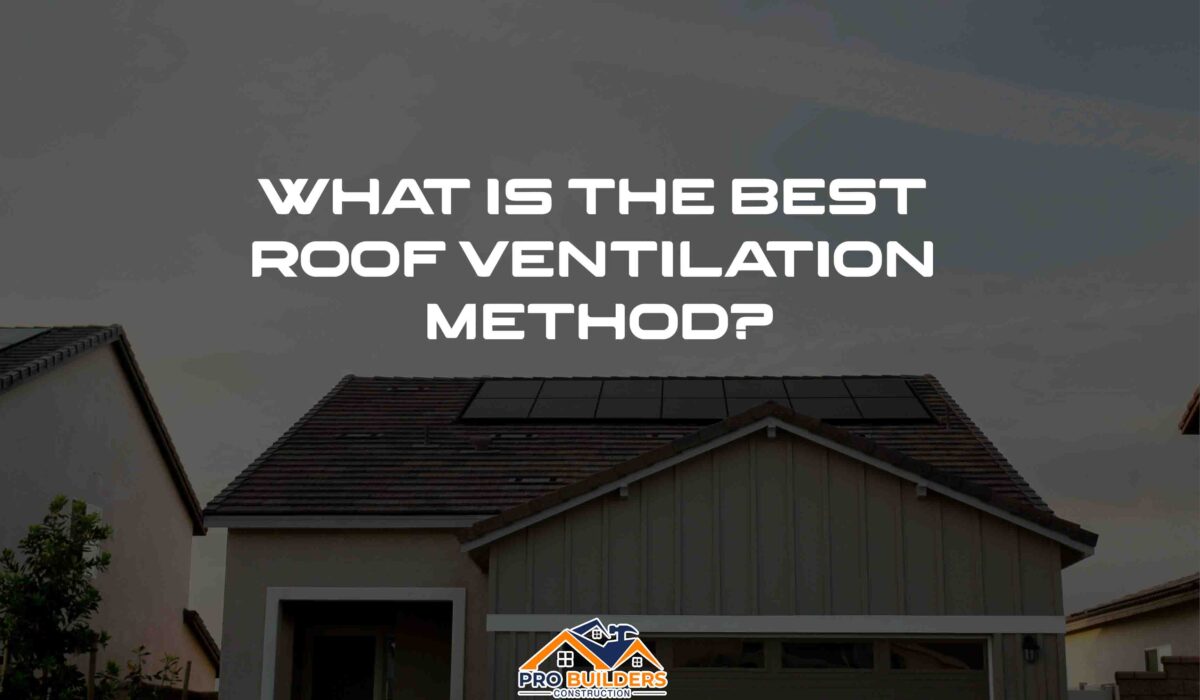When it comes to taking care of the house, the roof doesn’t get much attention. But a healthy roof is important for keeping your home safe from the weather and keeping its structure sound. Proper airflow is an important but often forgotten part of a healthy roof. This guide will explain why roof ventilation is important, go over the different ways to do it, and help you pick the best one for your home.
The Need to Breathe: How Roof Ventilation Works
Imagine that your attic is a living thing that can breathe. Like your lungs, the air in your attic needs to flow freely for it to work well. Ventilation moves new air through a room, getting rid of heat, moisture, and old air. If your roof doesn’t have enough airflow, heat that builds up can damage it, and if water builds up, mold can grow and cause other problems.
Passive and active ventilation are the two main ways to let air into a roof.
Passive ventilation: In this method, air moves through your attic thanks to natural forces such as wind and changes in temperature (convection). Most of the time, passive vents are put in at the eaves (low vents) and soffits (high vents) of your roof to let air move naturally. Passive systems are quiet and don’t need much upkeep, but their performance can change based on the weather and how the attic is set up.
Active ventilation: This method uses motorized parts to keep air moving freely no matter what the weather is like. Active vents give you more control over air flow, but they might need electricity or regular upkeep.
How to Pick the Best Ventilation System
There are pros and cons to both silent and active ventilation. The best choice for your home will rely on your budget, climate, and the size and layout of your attic, among other things.
Choices for active ventilation:
Active ventilation is often more effective than passive systems, even though passive systems are easier to keep up. If you choose active airflow, these are some common choices to think about:
Ridge Vents with Baffles: These vents are put in along the peak of your roof and are almost impossible to see from the ground. A baffle helps direct wind and keeps things that don’t belong there, like rain or trash, from getting into the attic.
Turbine Vents: These well-known “whirlybird” vents use wind to make a strong vacuum that pulls hot air out of your attic. Although they work well and aren’t too loud, it’s important to place them correctly to get the best results and keep water out.
Power Vents: Vents that are driven by electricity provide consistent air flow no matter what the weather is like. They work great in attics that don’t get much wind or have complicated plans. Power vents, on the other hand, need to be installed by a professional and need regular upkeep, which could include replacing the motor.
Solar-Powered Vents: Solar-powered vents are an option for environmentally aware homeowners. The fans in these vents are powered by solar energy, which is good for the earth. Even though they use little energy, the fact that they need sunshine can make them less useful when it’s cloudy or at night.
Why good ventilation is important
Putting money into good roof airflow will help your home in many ways:
Increases Roof Lifespan: Too much heat weakens roofs, speeding up their wear and tear and raising the risk of leaks. Having enough air flow through your roof keeps it cooler, which makes it last longer.
Stops Mold Growth: Mold can grow in an attic that doesn’t have enough air flow because it holds moisture. It’s possible for mold to damage your roof and make your family sick. Good airflow keeps moisture from building up and stops mold from growing.
Better for the environment: If your attic is hot and stuffy, your HVAC system has to work harder to keep your home at a comfortable temperature. Having enough air keeps the temperature in your attic cooler, which is better for your HVAC system and lowers your energy bills.
Makes Your Home More Comfortable: Good ventilation helps make your whole house more comfortable by getting rid of heat and moisture in the attic.
Talking to a Professional
To pick the best ventilation system for your home, you need to think carefully about your wants, and we can definitely help you choose. We will decide what’s the best way to ventilate your attic depending on the structure of your roof, how your attic is set up, and the weather where you live.
Additionally, we will guarantee that active ventilation systems are installed correctly to ensure peak performance and avert future issues.
By making sure your roof has enough air flow, you’ll be protecting your house, saving money on energy costs, and making sure it stays a healthy place to live for years to come.



3 Comments
Comments are closed.